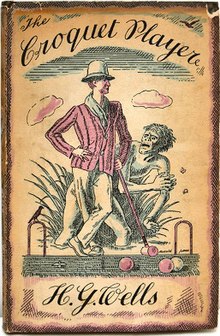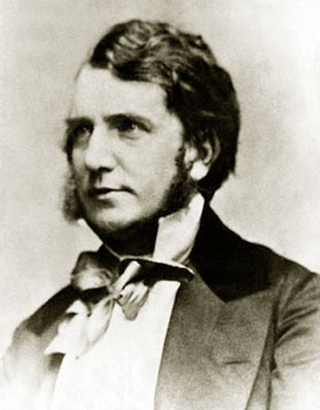
Joseph Thomas Sheridan Le Fanu was an Irish writer of Gothic tales, mystery novels, and horror fiction. He was a leading ghost story writer of his time, central to the development of the genre in the Victorian era. M. R. James described Le Fanu as "absolutely in the first rank as a writer of ghost stories". Three of his best-known works are the locked-room mystery Uncle Silas, the vampire novella Carmilla, and the historical novel The House by the Churchyard.

Timothy Thomas Powers is an American science fiction and fantasy author. His first major novel was The Drawing of the Dark (1979), but the novel that earned him wide praise was The Anubis Gates (1983), which won the Philip K. Dick Award, and has since been published in many other languages. His other written work include Dinner at Deviant's Palace (1985), Last Call (1992), Expiration Date (1996), Earthquake Weather (1997), Declare (2000), and Three Days to Never (2006). Powers has won the World Fantasy Award twice for his critically acclaimed novels Last Call and Declare. His 1987 novel On Stranger Tides served as inspiration for the Monkey Island franchise of video games and was partly adapted into the fourth Pirates of the Caribbean film.
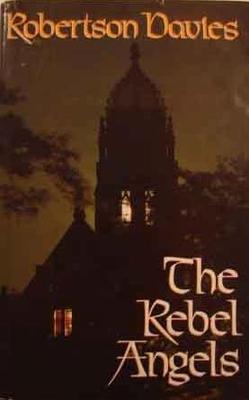
The Rebel Angels is Canadian author Robertson Davies's most noted novel, after those that form his Deptford Trilogy.
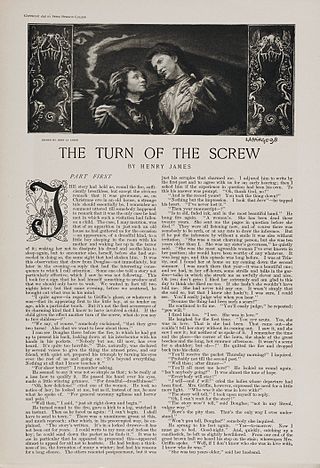
The Turn of the Screw is an 1898 gothic horror novella by Henry James which first appeared in serial format in Collier's Weekly from January 27 to April 16, 1898. On October 7, 1898, it was collected in The Two Magics, published by Macmillan in New York City and Heinemann in London. The novella follows a governess who, caring for two children at a remote country house, becomes convinced that they are haunted. The Turn of the Screw is considered a work of both Gothic and horror fiction.

A ghost story is any piece of fiction, or drama, that includes a ghost, or simply takes as a premise the possibility of ghosts or characters' belief in them. The "ghost" may appear of its own accord or be summoned by magic. Linked to the ghost is the idea of a "haunting", where a supernatural entity is tied to a place, object or person. Ghost stories are commonly examples of ghostlore.

Cycle of the Werewolf is a horror novella by American writer Stephen King, featuring illustrations by comic-book artist Bernie Wrightson. Each chapter is a short story unto itself. It tells the story of a werewolf haunting a small town as the moon turns full once every month. It was published as a limited-edition hardcover in 1983 by Land of Enchantment, and in 1985 as a mass-market trade paperback by Signet. King also wrote the screenplay for its film adaptation, Silver Bullet (1985). It is King's shortest novel to date at 127 pages, which makes it technically a novella.

Vernon Lee was the pseudonym of the British writer Violet Paget. She is remembered today primarily for her supernatural fiction and her work on aesthetics. An early follower of Walter Pater, she wrote over a dozen volumes of essays on art, music and travel.
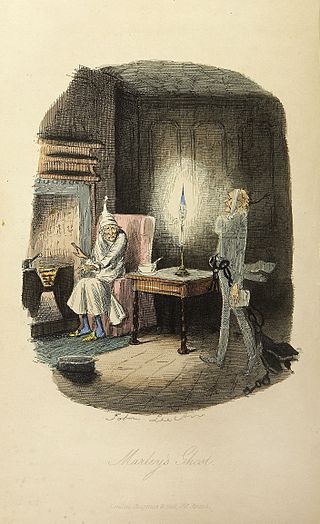
Jacob Marley is a fictional character in Charles Dickens's 1843 novella A Christmas Carol. Marley has been dead for seven years, and was a former business partner of the miser Ebenezer Scrooge, the novella's protagonist. On Christmas Eve, Scrooge is visited by Marley's ghost, who wanders the Earth entwined by heavy chains and money boxes forged during a lifetime of greed and selfishness. Marley tells Scrooge that he has a single chance of redemption to avoid the same fate: he will be visited by three spirits, in the hope that he will mend his ways; otherwise, he will be cursed to carry much heavier chains of his own.
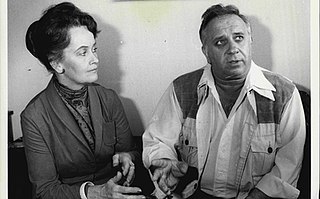
Edward Warren Miney and Lorraine Rita Warren were American paranormal investigators and authors associated with prominent cases of alleged hauntings. Edward was a self-taught and self-professed demonologist, author, and lecturer. Lorraine professed to be clairvoyant and a light trance medium who worked closely with her husband.

Mythago Wood is a fantasy novel by British writer Robert Holdstock, published in the United Kingdom in 1984. Mythago Wood is set in Herefordshire, England, in and around a stand of ancient woodland, known as Ryhope Wood. The story involves the internally estranged members of the Huxley family, particularly Stephen Huxley, and his experiences with the enigmatic forest and its magical inhabitants. The conception began as a short story written for the 1979 Milford Writer's Workshop; a novella of the same name appeared in the September 1981 edition of The Magazine of Fantasy & Science Fiction.

Ghost hunting is the process of investigating locations that are purportedly haunted by ghosts. The practice has been heavily criticized for its dismissal of the scientific method. No scientific study has ever been able to confirm the existence of ghosts. Ghost hunting is considered a pseudoscience by the vast majority of educators, academics, science writers and skeptics. Science historian Brian Regal described ghost hunting as "an unorganized exercise in futility".

In a Glass Darkly is a collection of five stories by Sheridan Le Fanu, first published in 1872, the year before his death. The second and third stories are revised versions of previously published stories. The first three stories are short stories, and the fourth and fifth are long enough to be called novellas.

H. G. Wells was a prolific writer of both fiction and non-fiction. His writing career spanned more than sixty years, and his early science fiction novels earned him the title of "The Father of Science Fiction".
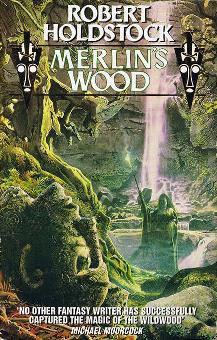
Merlin's Wood; or, The Vision of Magic is a short novel by British writer Robert Holdstock, first published in the United Kingdom in 1994. The novel is considered part of the Mythago Wood cycle, but takes place in Brittany, France instead of Herefordshire, England. The work has all new characters and focuses on the mythical birthplace and burial site of Merlin, the magical wood Brocéliande. Brocéliande is a smaller version of Ryhope wood where British myth predominates.
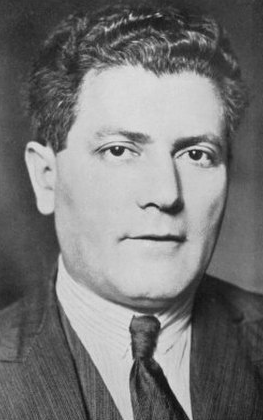
Nandor Fodor was a British and American parapsychologist, psychoanalyst, author and journalist of Hungarian origin.
The idea of a fourth dimension has been a factor in the evolution of modern art, but use of concepts relating to higher dimensions has been little discussed by academics in the literary world. From the late 19th century onwards, many writers began to make use of possibilities opened up by the exploration of such concepts as hypercube geometry. While many writers took the fourth dimension to be one of time, others preferred to think of it in spatial terms, and some associated the new mathematics with wider changes in modern culture.

All Aboard for Ararat is a 1940 allegorical novella by H. G. Wells that tells a modernized version of the story of Noah and the Flood. Wells was 74 when it was published, and it is the last of his utopian writings.

The Opium General and other stories by Michael Moorcock was a hardcover collection of novellas, short stories, and articles. It was published in 1984 by Harrap. It was a collection of new work and rare items.
Dexter Gabriel, better known by his pen name Phenderson Djèlí Clark, is an American speculative fiction writer and historian, who is an assistant professor in the department of history at the University of Connecticut. He uses a pen name to differentiate his literary work from his academic work, and has also published under the name A. Phenderson Clark. This pen name, "Djèlí", makes reference to the griots – traditional Western African storytellers, historians and poets.

The Ceremonies is a novel by T. E. D. Klein published in 1984. The Ceremonies is an extension of Klein's earlier novella, "The Events at Poroth Farm", which he released in 1972.
